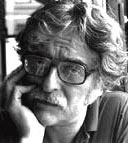 |
→ July 2007 Contents → Column
|
Nuts & Bolts
July 2007
|
 |
|
"Digital is the Devil's work." "Digital is bad." How long do I have to listen to this crap? When the Greeks tarred walls or the camera obscura of painters were displaced, did we have to listen to "the ambrotype is the Devil's work" or "film is bad"?
Every time a photographic medium is displaced, be it film or platinum paper, a giant cry goes up that photography is in the dumper.
I can only think of one major fault with digital. That is that right after taking a picture we spend too much time looking at its preview on the camera's view screen and too little time looking at the actual subject.
That fault, dear Brutus, is not in our digital cameras, but in ourselves .… Oh, damn.
My favorite technical bad boy is automation. Admittedly, it's a stretch to blame something you can turn off for ruining your photography. But it's preferable to having to admit that you don't know what you're doing.
Auto white balance – to oversimplify, it scrambles the color values to produce a neutral gray. Quite often the result is auto ugly. Try setting an appropriate, specific balance. You only have to do it once, at the beginning of the shoot. Your pictures will probably benefit. Should you forget, the fact that you can override auto white balance is one of the strongest arguments for shooting raw.
Take auto exposure – once again, a scrambling and averaging process. Between segmented and limited area TTL readings, you are going to get a high percentage of acceptable exposures. But, it's a high yield, not a guarantee, from a mindless machine that averages the values it sees and comes up with an exposure that puts that averaged value somewhere in the middle of the sensor range that the camera manufacturer thinks will yield a high percentage of acceptable exposures.
Jpegs, the quick, efficient files that many news photographers use, have little exposure latitude. Even the latitude of raw files is greatly exaggerated in many photographers' minds. If the important information in the photographs is contained in the highlights or shadows, auto exposure can put them in digital disappearance land. Bracket, check the histogram, do whatever it takes. You may also find that a less than automatic exposure is simply better looking.
Program mode – I leave my camera in program mode so it is always ready for a quick, unexpected grab shot. But I rarely shoot anything else in it. If I am going to use auto exposure (with auto bracketing as a backup) in some situation where all hell breaks loose and the light is constantly changing, I am more likely to use aperture or shutter speed automation. Most often I pin the shutter speed at a high value and let the aperture fall where it may. With a long lens in less than bright light, I'll go for the very highest shutter speed possible by using automation to keep the lens at its maximum aperture.
What about auto focus? Uh, Oh! My anti-auto rant just hit a snag. Looking over my own negatives and slides from film SLRs without auto focus and, to a lesser extent, the negs of friends, it's pretty obvious that ground-glass focusing of short and normal focal-length lenses was a little on the hit and miss side and was one of the factors that made rangefinder cameras popular.
Still, while auto focus produces better results than you and I, there are some situations that it does not handle that well. Extremely fast lenses with extremely shallow depth of field may be beyond the camera's auto focus capabilities. Using a center focusing spot and reframing to put the important subject off-center can compound the problem. These problems will be most obvious in close-ups. Gosh, it sounds like there are times when auto focus becomes almost human. Bracket focus or focus manually with an appropriate focusing screen. Some may also wish to pray.
Auto-everything means that almost anybody can take pictures that will "come out" most of the time. This is a good thing. Families have better snapshots. Experts on a given subject, with no particular interest in photography, are able to turn out acceptable visual records of their work. Nice folks can boost their income by becoming weekend professionals. And newspapers can find photographers that will work for even less money. And, if the pictures aren't as good as they could or should be, well, that's a small price to pay.
Daryl Lang wrote a piece for Photo District News that ended with a quote from Philip Jones Griffiths, one of the wiser and more talented photographers on the face of this earth. Philip said:
"I believe that we can't ignore a simple, simple fact, and that is that the world is being dumbed down."
© Bill Pierce
Contributing Writer
|
|
Back to July 2007 Contents
|
|